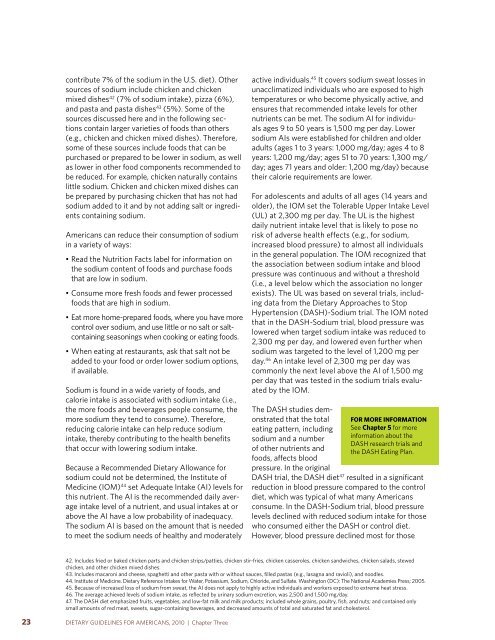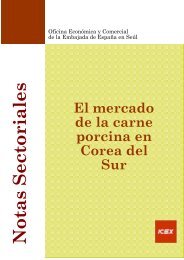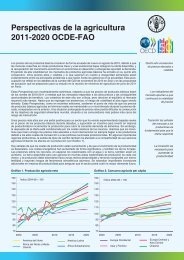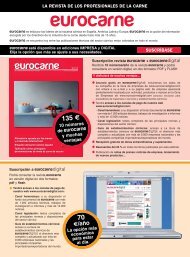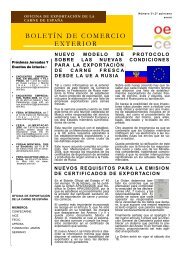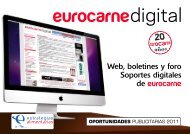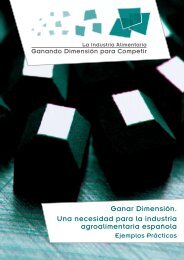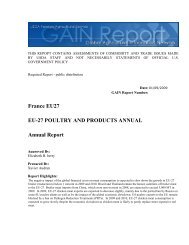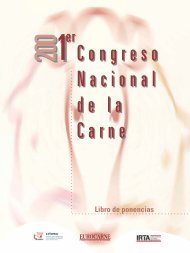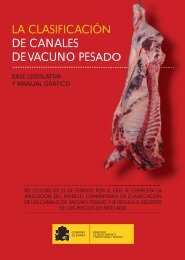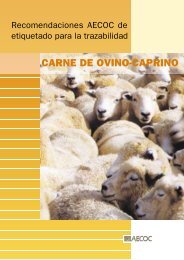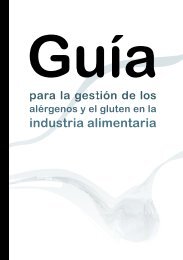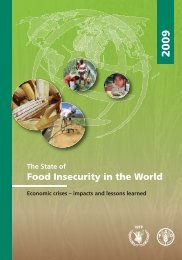Dietary Guidelines for Americans - SchoolNutritionAndFitness.com
Dietary Guidelines for Americans - SchoolNutritionAndFitness.com
Dietary Guidelines for Americans - SchoolNutritionAndFitness.com
- No tags were found...
You also want an ePaper? Increase the reach of your titles
YUMPU automatically turns print PDFs into web optimized ePapers that Google loves.
contribute 7% of the sodium in the U.S. diet). Othersources of sodium include chicken and chickenmixed dishes 42 (7% of sodium intake), pizza (6%),and pasta and pasta dishes 43 (5%). Some of thesources discussed here and in the following sectionscontain larger varieties of foods than others(e.g., chicken and chicken mixed dishes). There<strong>for</strong>e,some of these sources include foods that can bepurchased or prepared to be lower in sodium, as wellas lower in other food <strong>com</strong>ponents re<strong>com</strong>mended tobe reduced. For example, chicken naturally containslittle sodium. Chicken and chicken mixed dishes canbe prepared by purchasing chicken that has not hadsodium added to it and by not adding salt or ingredientscontaining sodium.<strong>Americans</strong> can reduce their consumption of sodiumin a variety of ways:• Read the Nutrition Facts label <strong>for</strong> in<strong>for</strong>mation onthe sodium content of foods and purchase foodsthat are low in sodium.• Consume more fresh foods and fewer processedfoods that are high in sodium.• Eat more home-prepared foods, where you have morecontrol over sodium, and use little or no salt or saltcontainingseasonings when cooking or eating foods.• When eating at restaurants, ask that salt not beadded to your food or order lower sodium options,if available.Sodium is found in a wide variety of foods, andcalorie intake is associated with sodium intake (i.e.,the more foods and beverages people consume, themore sodium they tend to consume). There<strong>for</strong>e,reducing calorie intake can help reduce sodiumintake, thereby contributing to the health benefitsthat occur with lowering sodium intake.Because a Re<strong>com</strong>mended <strong>Dietary</strong> Allowance <strong>for</strong>sodium could not be determined, the Institute ofMedicine (IOM) 44 set Adequate Intake (AI) levels <strong>for</strong>this nutrient. The AI is the re<strong>com</strong>mended daily averageintake level of a nutrient, and usual intakes at orabove the AI have a low probability of inadequacy.The sodium AI is based on the amount that is neededto meet the sodium needs of healthy and moderatelyactive individuals. 45 It covers sodium sweat losses inunacclimatized individuals who are exposed to hightemperatures or who be<strong>com</strong>e physically active, andensures that re<strong>com</strong>mended intake levels <strong>for</strong> othernutrients can be met. The sodium AI <strong>for</strong> individualsages 9 to 50 years is 1,500 mg per day. Lowersodium AIs were established <strong>for</strong> children and olderadults (ages 1 to 3 years: 1,000 mg/day; ages 4 to 8years: 1,200 mg/day; ages 51 to 70 years: 1,300 mg/day; ages 71 years and older: 1,200 mg/day) becausetheir calorie requirements are lower.For adolescents and adults of all ages (14 years andolder), the IOM set the Tolerable Upper Intake Level(UL) at 2,300 mg per day. The UL is the highestdaily nutrient intake level that is likely to pose norisk of adverse health effects (e.g., <strong>for</strong> sodium,increased blood pressure) to almost all individualsin the general population. The IOM recognized thatthe association between sodium intake and bloodpressure was continuous and without a threshold(i.e., a level below which the association no longerexists). The UL was based on several trials, includingdata from the <strong>Dietary</strong> Approaches to StopHypertension (DASH)-Sodium trial. The IOM notedthat in the DASH-Sodium trial, blood pressure waslowered when target sodium intake was reduced to2,300 mg per day, and lowered even further whensodium was targeted to the level of 1,200 mg perday. 46 An intake level of 2,300 mg per day was<strong>com</strong>monly the next level above the AI of 1,500 mgper day that was tested in the sodium trials evaluatedby the IOM.The DASH studies demonstratedthat the totaleating pattern, includingsodium and a numberof other nutrients andfoods, affects bloodpressure. In the original<strong>for</strong> More in<strong>for</strong>MationSee chapter 5 <strong>for</strong> morein<strong>for</strong>mation about theDASH research trials andthe DASH Eating Plan.DASH trial, the DASH diet 47 resulted in a significantreduction in blood pressure <strong>com</strong>pared to the controldiet, which was typical of what many <strong>Americans</strong>consume. In the DASH-Sodium trial, blood pressurelevels declined with reduced sodium intake <strong>for</strong> thosewho consumed either the DASH or control diet.However, blood pressure declined most <strong>for</strong> those42. Includes fried or baked chicken parts and chicken strips/patties, chicken stir-fries, chicken casseroles, chicken sandwiches, chicken salads, stewedchicken, and other chicken mixed dishes.43. Includes macaroni and cheese, spaghetti and other pasta with or without sauces, filled pastas (e.g., lasagna and ravioli), and noodles.44. Institute of Medicine. <strong>Dietary</strong> Reference Intakes <strong>for</strong> Water, Potassium, Sodium, Chloride, and Sulfate. Washington (DC): The National Academies Press; 2005.45. Because of increased loss of sodium from sweat, the AI does not apply to highly active individuals and workers exposed to extreme heat stress.46. The average achieved levels of sodium intake, as reflected by urinary sodium excretion, was 2,500 and 1,500 mg/day.47. The DASH diet emphasized fruits, vegetables, and low-fat milk and milk products; included whole grains, poultry, fish, and nuts; and contained onlysmall amounts of red meat, sweets, sugar-containing beverages, and decreased amounts of total and saturated fat and cholesterol.23DIETARY GUIDELINES FOR AMERICANS, 2010 | Chapter Three


